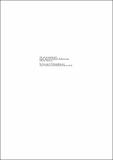| dc.contributor.author | Njiru, George K. | |
| dc.date.accessioned | 2011-11-17T15:44:49Z | |
| dc.date.available | 2011-11-17T15:44:49Z | |
| dc.date.issued | 1981-03 | |
| dc.identifier.citation | Njiru, George K. (1981) The Rendille economy: some preliminary findings on trading activities. Working paper no. 389, Nairobi: Institute for Development Studies, University of Nairobi | en_GB |
| dc.identifier.uri | https://opendocs.ids.ac.uk/opendocs/handle/20.500.12413/1259 | |
| dc.description.abstract | In this paper sales of camels, cattle, sheep and goats by Rendille, a nomadic pastoral tribe occupying the Laisamis Division of Marsabit District in Eastern Province, between August 1979 and July 1980 are presented. Prices paid to pastoralists for this livestock and prices realised by traders at various markets are also presented. The sale of the Livestock Marketing Division (LMD) of the Ministry of Livestock Development, in the purchase of cattle is also discussed at length.
The next section discusses trade in the six most important items which pastoralists buy. These items are maize meal (posho), sugar, tea, tobacco, cloth and shoes. The purchase of these items can account for up to 90% of the income got from the sale of livestock by pastoralists. The relationship between livestock and skin sales one hand and the sales of these items is shown to be a very strong one.
Some of the major hindrances to trade identified in the paper include lack of capital by traders, very poor road network, long distances to markets for livestock and skins and to distributors of items desired by pastoralists, and a lack of reliable well organised markets for the products which pastoralists want to sell. It is shown that although the prices for livestock and skins were poor pastoralists managed to sell approximately 3.3% of their sheep and cattle, 83.8% of their sheep skins and 60.4% of goat skins. They purchased goods worth Shs 2,804,711 or 116 Shs per capita, despite frequent shortages of posho the main item.
Finally preliminary recommendations on how to improve the marketing of livestock, skins and retail goods are made. It is suggested that provision of better markets, credit and incentive goods will result in more livestock and skin sales and the purchase of more goods from outside the district. This would make the pastoralists more commercial and open opportunities of enjoying the consumption of goods and services hitherto unavailable to them. | en_GB |
| dc.language.iso | en | en_GB |
| dc.publisher | Institute for Development Studies, University of Nairobi | en_GB |
| dc.relation.ispartofseries | Working Papers.;389 | |
| dc.rights.uri | http://creativecommons.org/licenses/by-nc-nd/3.0/ | en_GB |
| dc.subject | Trade | en_GB |
| dc.subject | Rural Development | en_GB |
| dc.title | The Rendille economy: some preliminary findings on trading activities | en_GB |
| dc.type | Series paper (non-IDS) | en_GB |
| dc.rights.holder | Institute for Development Studies, University of Nairobi | en_GB |
| dc.identifier.blds | 317635 | |


